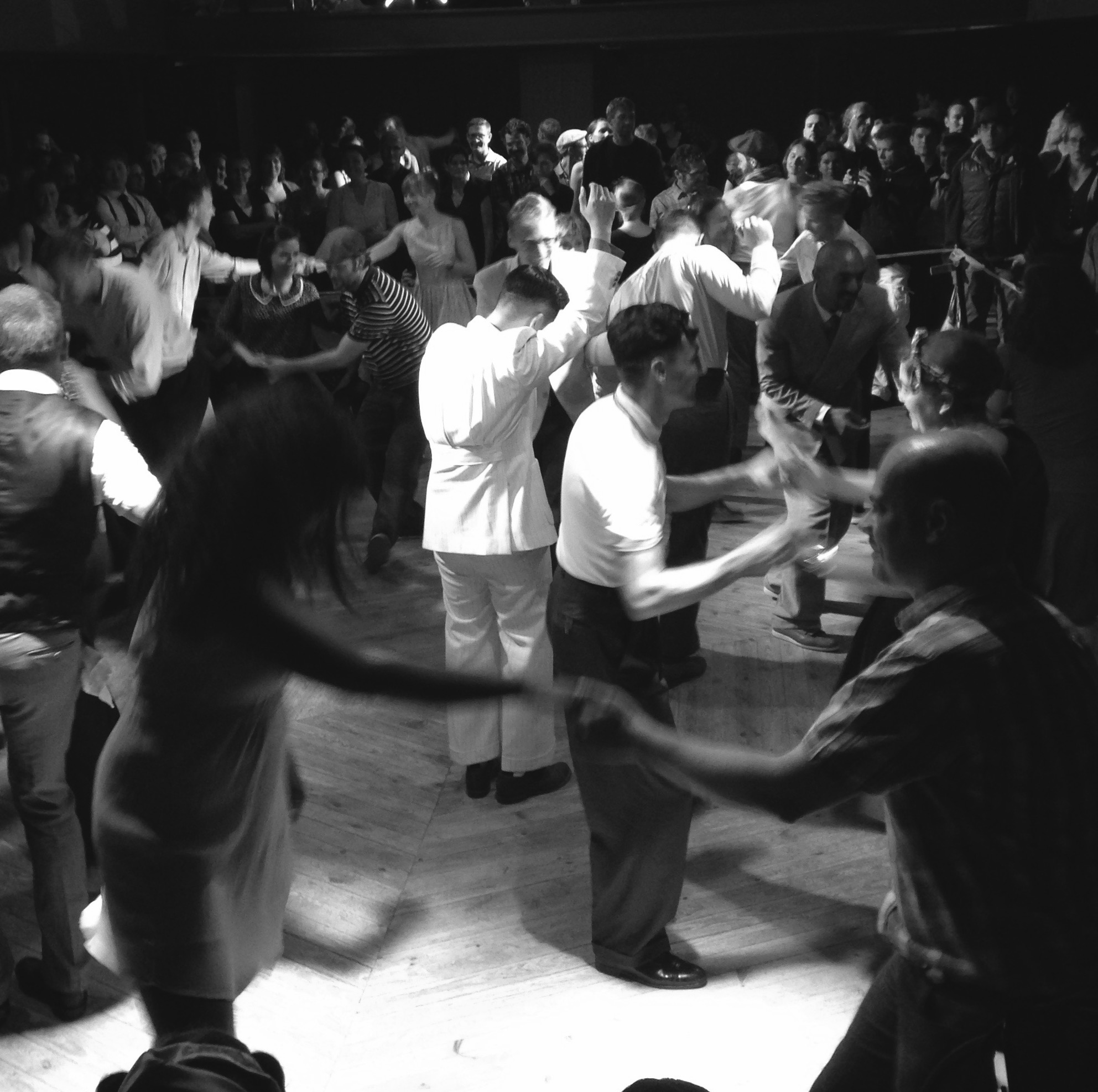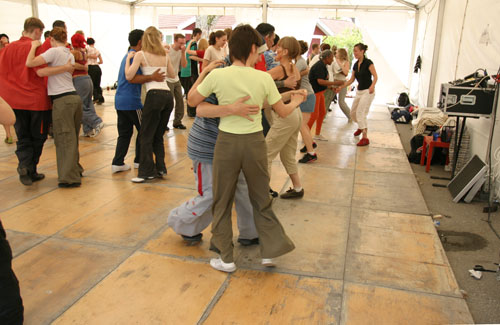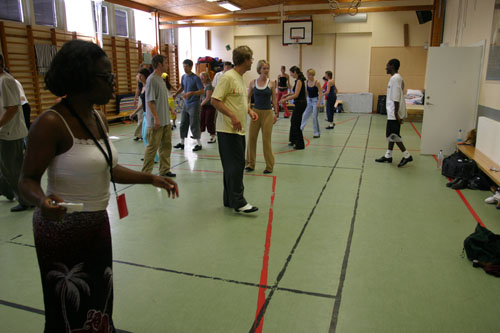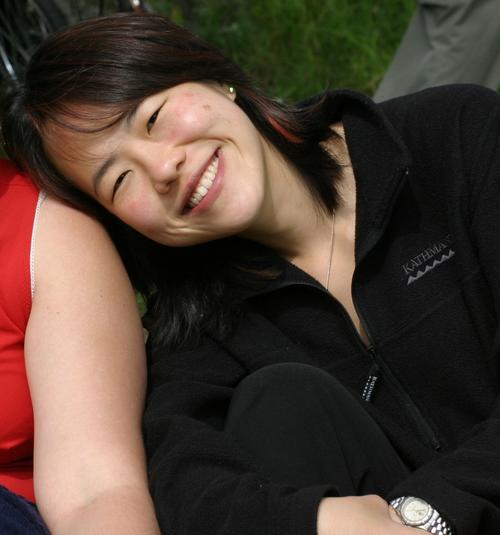This is an example of how not to play a late night lindy hop set. I started at 4.30am and finished at 7.30am. The first part of the set (35 songs before these ones) were high energy, lots of fun. It was a Tuesday night, which is usually a good night for lindy hop at Herrang, because the main room is slow drag, and people are looking to party. But I managed to kill this night well before it should have ended. Because I was tired, I was sitting down, and I played tired songs.
I really like all these songs, and I like the way they’re combined (though it’s a bit predictable). But they get gradually tireder and slower and less exciting. Bad idea. When it’s that late, you need to keep the energy (if not the tempos) up, so people don’t realise how tired they are. Silly DJ.
PS God I love Jimmie Noone.
(name bpm year band song length)
Deep Henderson 183 2014 Tuba Skinny (Todd Burdick, Western Borghesi, Jon Doyle, Barnabus Jones, Shaye Cohn, Robin Rapuzzi, Erika Lewis) Pyramid Strut 3:12
It’s Tight Like That 144 1928 Jimmie Noone’s Apex Club Orchestra (Joe Poston, Alex Hill, Junie Cobb, Bill Newton, Johnny Wells, George Mitchell, Fayette Williams) The Jimmie Noone Collection 2:49
Deep Trouble 161 1930 Jimmie Noone’s Apex Club Orchestra (Joe Poston, Zinky Cohn, Wilbur Gorham, Bill Newton, Johnny Wells, Elmo Tanner) The Jimmie Noone Collection 2:49
Davenport Blues 136 1934 Adrian Rollini and his Orchestra (Jack Teagarden) Father Of Jazz Trombone 3:14
Baby, Won’t You Please Come Home 137 1938 Pee Wee Russell’s Rhythm Makers (Max Kaminsky, Dicky Wells, Al Gold, James P. Johnson, Freddie Green, Wellman Braud, Zutty Singleton) The Complete H.R.S. Sessions (Mosaic disc 1) 3:19
Don’t You Leave Me Here 143 1939 Jelly Roll Morton’s New Orleans Jazzmen (Zutty Singleton) Jelly Roll Morton 1930-1939 2:23
Borneo 184 1928 Frankie Trumbauer and his Orchestra (Bix Beiderbecke, Charlie Margulis, Bill Rank, Chet Hazlett, Irving Friedman, Lennie Hayton, Eddie Lang, Min Liebrook, Hal McDonald, Scrappy Lambert, Bill Challis) The Complete Okeh and Brunswick Bix Beiderbecke, Frank Trumbauer and Jack Teagarden Sessions (1924-1936) (Mosaic disc 02) 3:11
Fan It 151 1936 Bob Wills San Antonio Rose [disc 02] 2:42
Ad Lib Blues 156 1940 Benny Goodman Septet (Buck Clayton, Lester Young, Count Basie, Charlie Christian, Freddie Green, Walter Page, Jo Jones) Charlie Christian: The Genius of The Electric Guitar (disc 2) 3:21
Four Or Five Times 173 1937 Jimmie Noone and his Orchestra (Charlie Shavers, Pete Brown, Frank Smith, Teddy Bunn, Wellman Braud, O’Neil Spencer, Teddy Simmons) Jimmie Noone: Chronological Classics 1934 – 1940 3:09
Southern Echoes 136 1941 Buddy Johnson and his Orchestra Walk ‘Em 3:19




